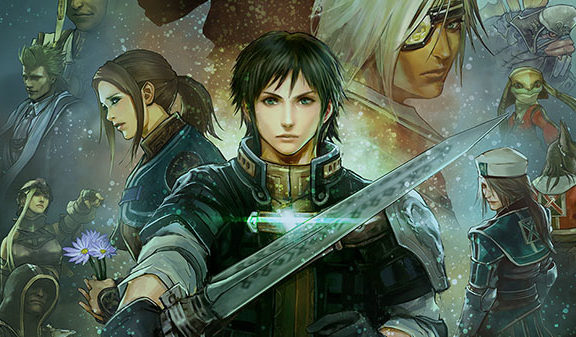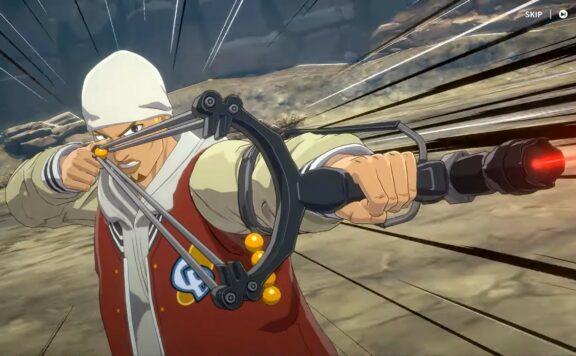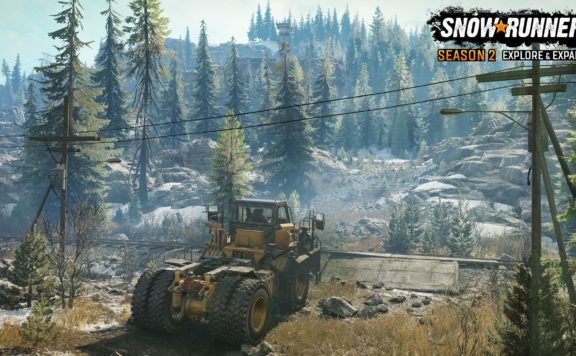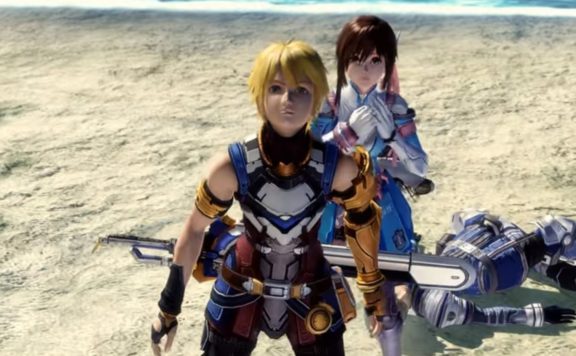Death end re;Quest is an odd mixture of visual novel and JRPG, of a dark narrative tone including gruesome death scenes and cheesy and fan service-y anime tropes. Developer Compile Heart/Idea Factory is probably best known for its Neptunia series, so if you are familiar with those games, you already have a rough idea of what to expect. However, Death end does offer a quite engaging horror/mystery story that is only held back by trying to squeeze too much into one single game. This is our Death end re;Quest review.
A mixture of virtual and real world
Heroine Shina is off to a bad start. Not only does she suffer from amnesia, but when her memory is slowly returning, she has to realize that she is trapped inside the VMMORPG ‘World Odyssey,’ which she helped to develop herself. Her former colleague Arata notices that the server of this game is still running, even though it was supposed to be shut down after Shina disappeared and the virtual world was filled with unfixable bugs and glitches one year ago. Much has changed since they last worked on the game and it seems like the bugs infected and changed the game entirely. Since they don’t know where Shina’s body is located and without any possibility of logging her out of the virtual reality, their only chance is to complete the game with the perfect ending.

Based on this premise, you will navigate through both, the virtual and the real world. While Shina is adventuring through the game and meeting new NPCs and potential party members, she is blocked from time to time by unpassable glitches. Then Arata has to intervene in the real world. Quickly it becomes clear that there is more to ‘World Odyssey’ than meets the eyes. Odd objects of the real world appear in the game and Arata has to find out their often quite horrifying meaning. Soon there develops a real mystery story and it’s these real-world sequences, where the game shines. While the in-game stages have the ballast of an at best mediocre RPG, the real world is narrated by visual novel passages only. This helps a ton in keeping the story intriguing.
Narrative rollercoaster
However, Death end is unable to keep the tension up over longer periods. The RPG exploration in the empty and linear surroundings of the virtual world feels tedious and ruins the pacing on many occasions. Don’t get me wrong – you can see that the developers try to set a grim tone. There are a lot of choices in the game where the wrong decision leads to a gory description of a character’s demise and an immediate game over. But this tone is repeatedly undermined by cheesy and cringe-worthy dialogues – which are decently dubbed though, if you choose the English localization – of characters apparently not taking their dismal situation too serious after all. These anime tropes simply don’t fit in such a setting.

Then there is, of course, the elephant in the room that doesn’t help the atmosphere either: The fan service is strong in this one. Maybe players of this very specific niche will be quite used to it, but since I am usually playing more “mainstream-y” JRPGs (already a very elastic term in that regard), I feel like this is something I have to address. Death end gains absolutely nothing by having breast physics, panty shots and to top it all, a special combat attack called Glitch Mode where the party members (all female, of course) become even more revealing. It would be a better game without these things, since it could be taken more seriously.
Billiard combat
Be that as it may, not all is bad about the RPG elements in Death end. The combat system, while not overly complex, is its strong suit. Each character can perform three actions in a row and combine them in a certain way can unlock new and stronger skills. There is a certain comedic element to the combat, since they almost feel like a billiard or pinball simulation. Since many skills can result in a finishing knockback blow, enemies are knocked through the arena like billiard balls. Pushing them against other enemies or the walls will induce extra damage, while hitting your own teammates is resulting in them punching the enemies even further away. What sounds like a nice gimmick is actually a fundamental strategic feature because of the severe extra damage it does. Unfortunately, the wonky controls spoil the party to some extent.

In the battle arenas, there are also so-called field bugs on the floor. Stepping on them will induce damage to your characters and raise their corruption while knocking enemies over these fields will clear them. Corruption is not only a bad thing though, because after reaching a certain level, but your party members will also transform into the before mentioned Glitch Mode and deal insane damage. A nice touch to the battle system is the fact that Arata, as the programmer that he is, can interfere a little bit into the fights, once enough field bugs are cleared. He can help with some sort of cheats, summon boss monsters that you defeated before or even briefly install a different genre, making you switch into the ego-perspective to shoot at enemies or play at a slot machine.
Overall, I think that Death end re;Quest would have worked better as a pure visual novel without the often tedious RPG elements. The mystery story is what makes it play worthy, but due to anime tropes and fan service, the grim narrative tone is not maintained consequently enough and the game confuses the player with being indecisive about what sort of mood it tries to set. Still, once I managed to blank out certain aspects of Death end and thanks to the enjoyable combat system, the story hooked me enough to keep playing.
Note: Our copy was reviewed on PS4 with a code provided by PR.
COMPARE TO: Hyperdimension Neptunia Series






